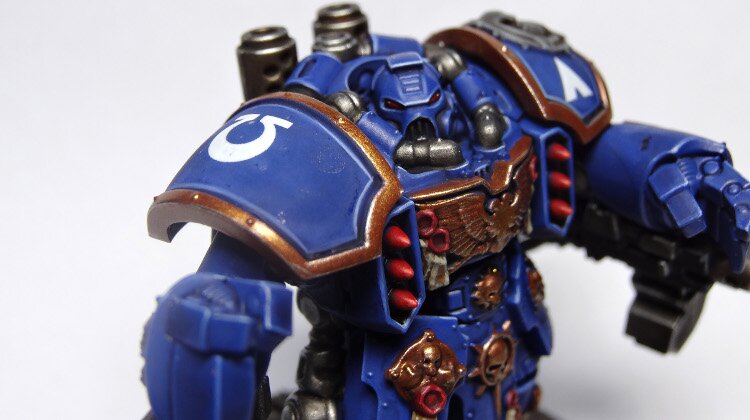This is a tutorial on using two of Games Workshop’s Citadel technical paints – ‘Ardcoat and Lahmian Medium – to apply decals to miniatures in a way so they appear to be perfectly part of the armour and are not clearly discernible as decals applied on top of the paint of a miniature.
This tutorial uses two Citadel Technical Paints:
- ‘Ardcoat
- Lahmian Medium
Step 1 – Where Do You Want A Decal?

Choose a space on the miniature where you want to apply a decal. Make sure it is clear of dust or particles. For this tutorial, I’ll add a decal to the shoulder pad of this Ultramarines Centurion.
Step 2 – Prepare Surface with ‘Ardcoat

Prepare the surface where the decal will go with a layer of Citadel ‘Ardcoat.
Step 3 – Apply Decal

Now carefully apply the decal.
Step 4 – Apply a Second Layer of ‘Ardcoat

Now return to the space with another layer of Citadel ‘Ardcoat. The idea is to try and minimise to difference in surface levels between the (slightly raised) decal and the surrounding surface.
Step 5 – Finish with Lahmian Medium

When everything is dry, apply Lahmian Medium to matt the surface. At this stage, you should see the decal starting to blend in with the model as if it were a part of it.
Showcase: Ultramarines Devastator Centurions

Here is a picture of the completed Centurion Devastator Squad. You can take a 360° view of this unit on YouTube.
Mini Brush Studio is a small studio doing commission painting. If you enjoyed this short tutorial, like Mini Brush Studio on Facebook or subscribe to their YouTube Channel.








